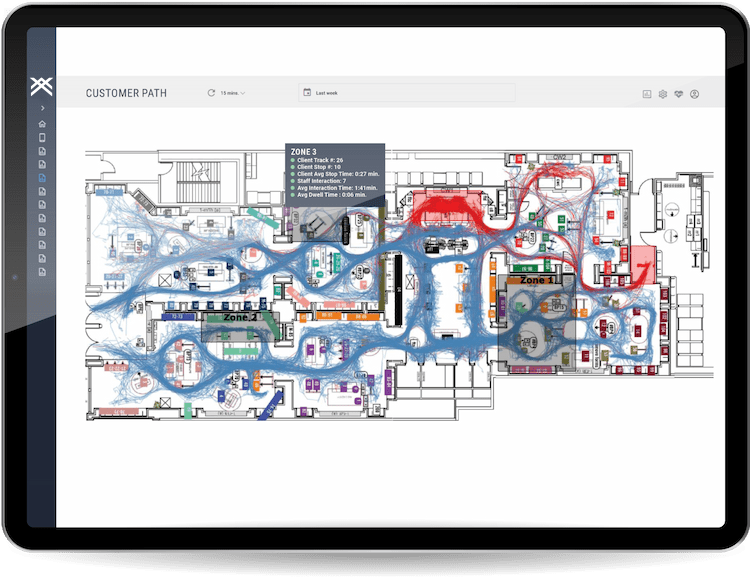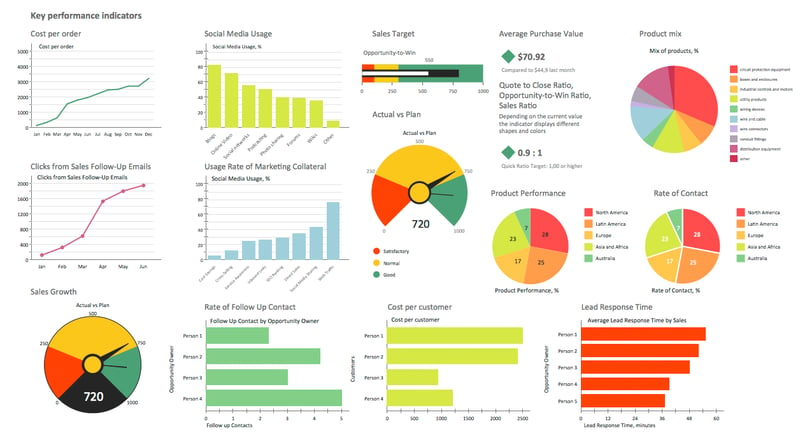Mapping the Future: How Vertical AI Agents Revolutionize Industry Operations Through Visual Intelligence
From Generic to Industry-Specific Intelligence
Explore how specialized AI agents are transforming healthcare, finance, retail, and manufacturing through precision-driven solutions that eliminate coding barriers and accelerate digital transformation across industry-specific operations.
The Vertical AI Revolution: From Generic to Industry-Specific Intelligence
The artificial intelligence landscape is experiencing a fundamental paradigm shift from horizontal, one-size-fits-all solutions to highly specialized AI agents designed for specific industry verticals. This transformation represents more than just technological evolution—it's a strategic revolution in how organizations approach automation and intelligent decision-making.
Unlike traditional general-purpose AI systems that require extensive customization, vertical AI agents leverage domain-specific reasoning engines and fine-tuned language models to address the unique challenges of particular industries. As highlighted in recent industry analysis, these specialized agents utilize advanced machine learning models and natural language processing to understand sector-specific nuances and deliver precision-driven results.
Evolution from Horizontal to Vertical AI
flowchart LR
A[Generic AI
2015-2020] --> B[Customized AI
2020-2022]
B --> C[Vertical AI Agents
2022-Present]
C --> D[Industry-Native
Intelligence
Future]
A1[Limited Domain Knowledge
High Customization Needs] --> A
B1[Sector Adaptations
Complex Integration] --> B
C1[Pre-trained Expertise
Rapid Deployment] --> C
D1[Autonomous Operations
Cross-Industry Learning] --> D
style A fill:#e1e5e9
style B fill:#ffd54f
style C fill:#ff8000
style D fill:#4caf50
The precision advantage of vertical AI agents stems from their industry-tailored training datasets and specialized knowledge bases. These systems understand sector-specific terminology, regulatory requirements, and operational workflows, enabling them to deliver more accurate insights and recommendations than their horizontal counterparts.

Real-world impact metrics demonstrate the transformative power of this approach. Organizations implementing vertical AI agents report streamlined operations with up to 40% reduction in processing times, enhanced decision-making accuracy through sector-specific insights, and dynamic requirement adaptation that responds to industry changes in real-time. To visualize these transformation journeys effectively, PageOn.ai's powerful AI Blocks feature allows organizations to create modular diagrams that break down the progression from basic automation to intelligent vertical agents, making complex transitions understandable for stakeholders across all technical levels.
Industry-Specific Implementation Landscapes
The true power of vertical AI agents becomes evident when examining their implementation across diverse industry sectors. Each sector presents unique challenges, regulatory environments, and operational requirements that demand specialized AI solutions rather than generic approaches.
Healthcare Sector Transformation
In healthcare, vertical AI agents are revolutionizing patient care through clinical decision support systems that assist medical professionals in diagnosing conditions and developing treatment protocols. These AI work assistants understand medical terminology, drug interactions, and treatment guidelines specific to various medical specialties.

Patient care optimization occurs through predictive analytics that analyze historical data to identify potential health risks and recommend preventive measures. Integration challenges include ensuring HIPAA compliance, maintaining data security, and seamlessly connecting with existing electronic health record systems. PageOn.ai's Deep Search capabilities enable healthcare organizations to incorporate medical data visualization standards into comprehensive workflow diagrams, ensuring that complex medical processes are communicated clearly to both technical and clinical teams.
Financial Services Innovation
Financial institutions leverage vertical AI agents for automated risk assessment frameworks that evaluate loan applications, investment opportunities, and market conditions with unprecedented speed and accuracy. These systems excel at fraud detection by analyzing transaction patterns and identifying anomalies that might indicate suspicious activity.
Financial AI Agent Capabilities
Personalized investment strategy development utilizes client financial profiles, risk tolerance, and market conditions to create tailored portfolio recommendations. Real-time transaction monitoring ensures compliance with financial regulations while maintaining optimal trading conditions. PageOn.ai's Vibe Creation feature transforms these complex financial processes into clear visual narratives, helping stakeholders understand intricate risk models and investment strategies through intuitive visual representations.
Retail and E-commerce Evolution
Retail vertical AI agents excel in customer service automation, providing 24/7 support that understands product catalogs, return policies, and customer history. Demand forecasting precision helps retailers optimize inventory levels, reducing both stockouts and excess inventory costs.

Inventory optimization and supply chain intelligence enable retailers to maintain optimal stock levels while minimizing carrying costs. Personalized shopping experiences emerge through behavioral analysis that tracks customer preferences, purchase history, and browsing patterns to deliver targeted product recommendations. PageOn.ai's visual storytelling capabilities allow retailers to map customer journey transformations, illustrating how AI agents enhance each touchpoint from initial awareness through post-purchase support.
Manufacturing Excellence
Manufacturing environments benefit from predictive maintenance capabilities that monitor equipment performance and predict failures before they occur, significantly reducing downtime and maintenance costs. Quality control automation ensures consistent product standards through real-time monitoring and defect detection.
Production optimization and resource allocation intelligence help manufacturers maximize output while minimizing waste and energy consumption. Safety monitoring systems continuously assess workplace conditions and alert supervisors to potential hazards, while compliance management ensures adherence to industry regulations and safety standards.
The No-Code Advantage: Pre-Trained Solutions for Immediate Impact
One of the most revolutionary aspects of vertical AI agents is their elimination of extensive customization and coding requirements for industry deployment. Unlike traditional AI implementations that require months of development and significant technical expertise, these pre-configured solutions address sector-specific challenges out of the box.
Implementation Timeline Comparison
Pre-configured models come equipped with industry-specific knowledge bases, regulatory compliance frameworks, and workflow templates that have been refined through extensive training on sector-specific datasets. This approach dramatically reduces implementation timelines from months to weeks, while simultaneously lowering technical barriers for organizations without extensive AI expertise.

Cost-effectiveness analysis reveals substantial savings when comparing traditional AI development approaches to vertical agent adoption. Organizations report development cost reductions of 60-80% while achieving faster time-to-value and more reliable performance outcomes. The intelligent agents industry ecosystem continues to evolve, providing increasingly sophisticated pre-trained solutions for diverse vertical markets.
To demonstrate implementation speed advantages effectively, PageOn.ai's AI Blocks feature enables organizations to create compelling before-and-after operational flow comparisons. These visual representations help stakeholders understand the dramatic efficiency gains possible through vertical AI adoption, making the business case clear and compelling for decision-makers across all organizational levels.
Technical Architecture and Integration Strategies
The technical foundation of vertical AI agents relies on sophisticated domain-specific reasoning engines that have been fine-tuned for specialized knowledge and workflows. These systems incorporate advanced natural language processing capabilities tailored to industry terminology, ensuring accurate interpretation of sector-specific communications and documentation.
Vertical AI Agent Architecture
flowchart TB
subgraph "User Interface Layer"
UI[Web Interface]
API[API Gateway]
Mobile[Mobile Apps]
end
subgraph "AI Agent Core"
NLP[Industry-Specific NLP]
Reasoning[Domain Reasoning Engine]
Memory[Knowledge Base]
end
subgraph "Data Processing"
Analytics[Sector Analytics]
ML[Specialized ML Models]
Validation[Compliance Validation]
end
subgraph "Integration Layer"
ERP[ERP Systems]
CRM[CRM Platforms]
Legacy[Legacy Systems]
end
UI --> API
Mobile --> API
API --> NLP
NLP --> Reasoning
Reasoning --> Memory
Reasoning --> Analytics
Analytics --> ML
ML --> Validation
Validation --> ERP
Validation --> CRM
Validation --> Legacy
style NLP fill:#ff8000
style Reasoning fill:#ff8000
style Analytics fill:#4caf50
Data analytics frameworks within vertical AI agents are optimized for sector-specific insights, incorporating industry benchmarks, regulatory requirements, and operational metrics that matter most to particular business sectors. These frameworks enable real-time analysis of complex datasets while maintaining compliance with industry-specific data governance requirements.

Integration pathways with existing enterprise systems require careful consideration of data security, system compatibility, and workflow continuity. Modern vertical AI agents support standard enterprise integration protocols including REST APIs, webhooks, and enterprise service buses, enabling seamless connectivity with CRM, ERP, and legacy systems without disrupting existing operations.
The development of effective AI agent tool chains requires sophisticated visual workflow design to ensure optimal performance and maintainability. PageOn.ai's Deep Search capabilities enable technical teams to incorporate relevant system diagrams and data flows into comprehensive architecture documentation, ensuring that complex technical implementations are communicated clearly to both technical and business stakeholders.
Measuring Transformation Impact and ROI
Quantifying the impact of vertical AI agent implementation requires comprehensive metrics that capture both operational improvements and strategic advantages. Organizations must establish baseline measurements across key performance indicators before deployment to accurately assess transformation outcomes.
Transformation Impact Metrics
Operational efficiency metrics demonstrate tangible improvements in processing times, resource utilization, and workflow automation. Organizations typically observe 40-60% reductions in manual processing requirements, accompanied by significant improvements in data accuracy and consistency across operations.

Decision-making speed improvements manifest through reduced analysis time, faster response to market changes, and enhanced predictive capabilities that enable proactive rather than reactive management approaches. Accuracy enhancements result from AI agents' ability to process vast amounts of data consistently without human error or fatigue factors.
Customer experience optimization metrics include reduced response times, more personalized service delivery, and improved problem resolution rates. Innovation acceleration indicators track the organization's ability to implement new solutions, adapt to market changes, and maintain competitive advantages through AI-enhanced capabilities.
To create compelling impact dashboards that communicate these improvements effectively, PageOn.ai's Agentic capabilities enable organizations to transform raw performance data into polished visual reports. These dashboards help stakeholders understand the full scope of transformation benefits while providing actionable insights for continuous improvement initiatives.
Future Horizons: Emerging Trends and Strategic Considerations
The evolution of vertical AI agents points toward increasingly sophisticated cross-industry knowledge transfer capabilities and hybrid agent development approaches. Future systems will leverage insights gained from one industry vertical to accelerate innovation and problem-solving in adjacent sectors, creating synergistic benefits across the broader intelligent agents industry ecosystem.
Future Technology Convergence
flowchart LR
subgraph "Current State"
VA[Vertical AI Agents]
IoT[IoT Sensors]
Edge[Edge Computing]
end
subgraph "Convergence Layer"
Fusion[Technology Fusion]
Learning[Cross-Industry Learning]
end
subgraph "Future Capabilities"
Auto[Autonomous Operations]
Predict[Predictive Ecosystems]
Adapt[Adaptive Intelligence]
end
VA --> Fusion
IoT --> Fusion
Edge --> Fusion
Fusion --> Learning
Learning --> Auto
Learning --> Predict
Learning --> Adapt
style Fusion fill:#ff8000
style Auto fill:#4caf50
style Predict fill:#4caf50
style Adapt fill:#4caf50
Ethical considerations and responsible AI deployment in specialized sectors require careful attention to bias prevention, transparency requirements, and accountability frameworks. Organizations must establish governance structures that ensure AI agents operate within ethical boundaries while maintaining the specialized capabilities that make them valuable for industry-specific applications.

Scalability challenges emerge as organizations seek to implement vertical AI agents across multiple business units and geographic locations. Multi-industry enterprise integration requires sophisticated orchestration capabilities that can manage diverse AI agents while maintaining consistency in performance and compliance standards.
Emerging technologies convergence, particularly the integration of IoT sensors, edge computing, and vertical AI agents, promises to create autonomous operational ecosystems that can respond to changing conditions in real-time. This convergence enables predictive maintenance, adaptive resource allocation, and self-optimizing workflows that continuously improve performance without human intervention.
Strategic roadmap development for organizations considering vertical AI adoption requires comprehensive planning that addresses technical requirements, organizational change management, and long-term scalability considerations. Successful implementations typically follow a phased approach that begins with pilot projects in specific business areas before expanding to enterprise-wide deployment.
Organizations developing company ai transformation roadmaps benefit from visual planning approaches that clearly communicate implementation phases, success metrics, and risk mitigation strategies. PageOn.ai's visual planning tools enable organizations to create comprehensive transformation roadmaps and strategic timelines that align technical capabilities with business objectives, ensuring successful adoption of vertical AI technologies across diverse organizational contexts.
Transform Your Visual Expressions with PageOn.ai
Ready to revolutionize how you communicate complex vertical AI transformations? PageOn.ai's powerful AI Blocks, Deep Search, and Vibe Creation features help you transform intricate industry-specific processes into clear, compelling visual narratives that drive understanding and action.
Start Creating with PageOn.ai TodayYou Might Also Like
Visualizing Your Path to Personal Success: Map and Measure What Truly Matters
Discover how to map and visualize your personal success metrics, align them with your core values, and create a customized tracking system that motivates genuine fulfillment.
Visualizing Spooky Action at a Distance: Making Quantum Entanglement Comprehensible
Explore quantum entanglement visualization techniques that transform Einstein's 'spooky action at a distance' from abstract theory into intuitive visual models for better understanding.
Mapping the Great Depression: Visualizing Economic Devastation and Recovery
Explore how data visualization transforms our understanding of the Great Depression, from unemployment heat maps to New Deal program impacts, bringing America's greatest economic crisis to life.
Visualizing Electronics Fundamentals: ROHM's Component Guide for Beginners to Experts
Explore ROHM's electronics basics through visual guides covering essential components, power semiconductors, sensors, automotive applications, and design resources for all skill levels.
